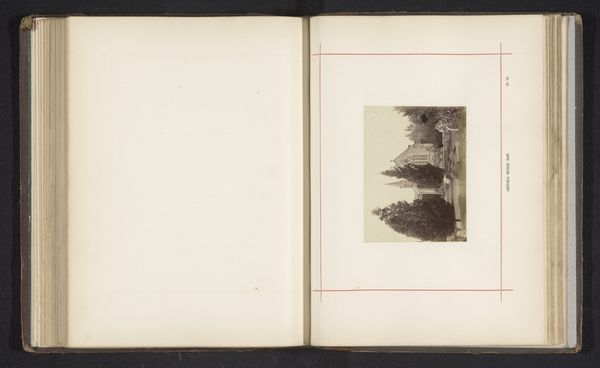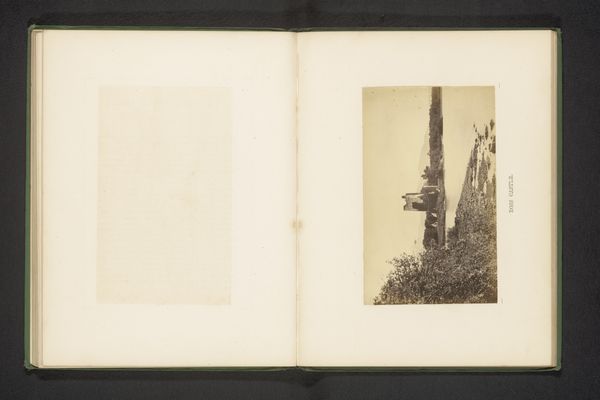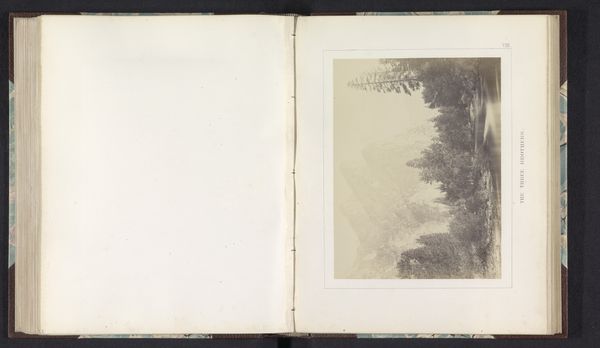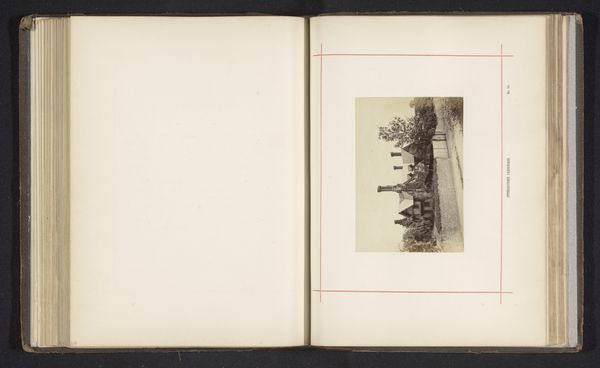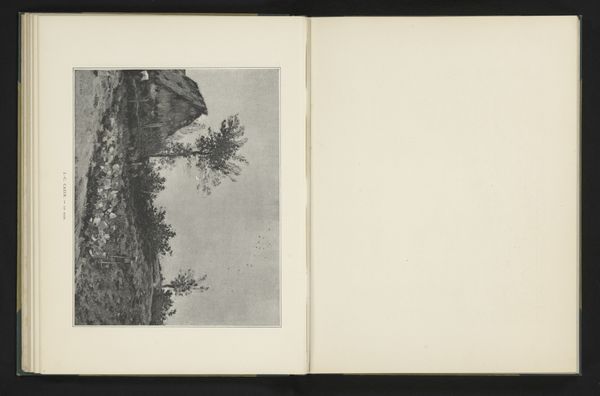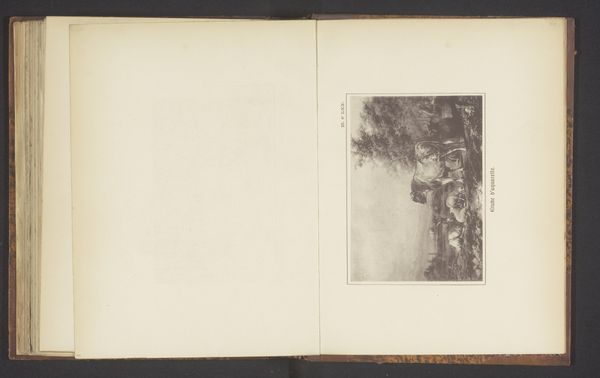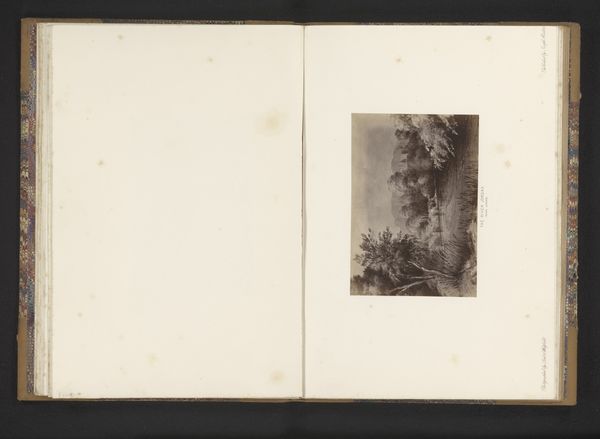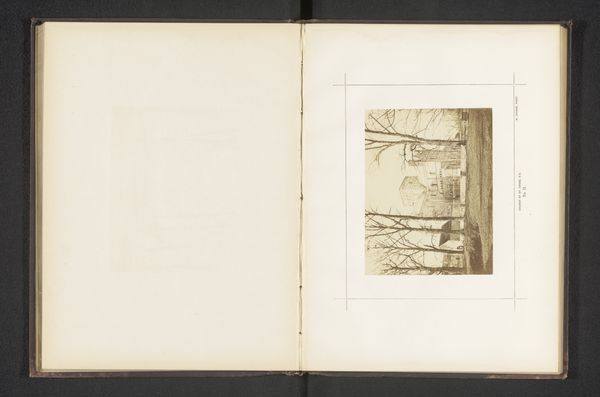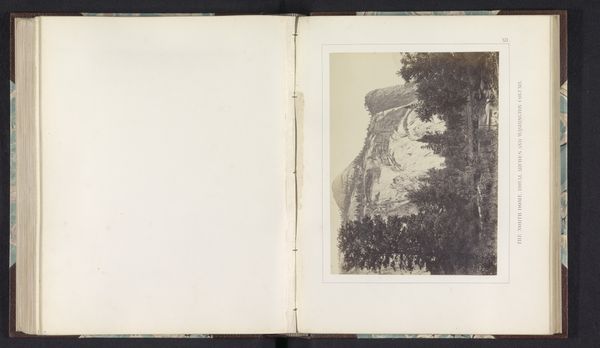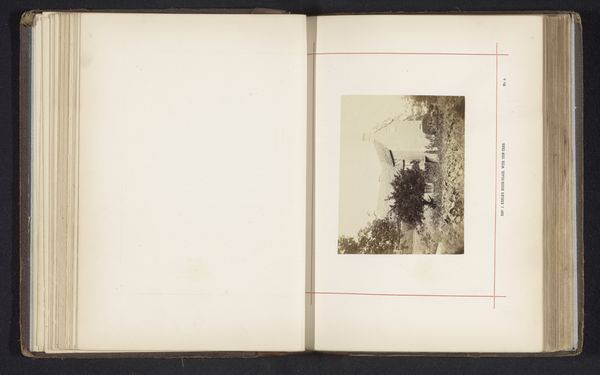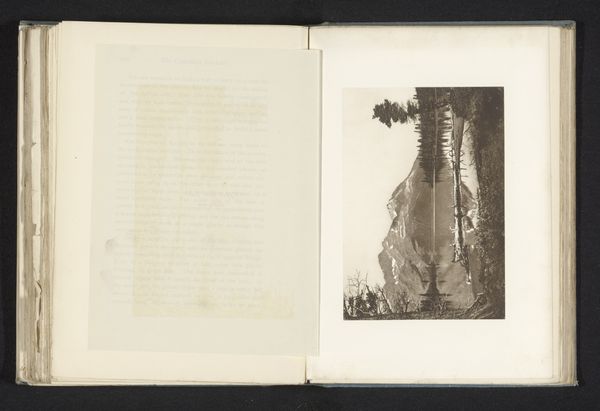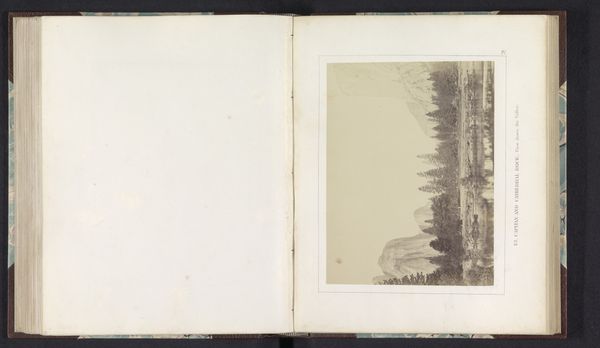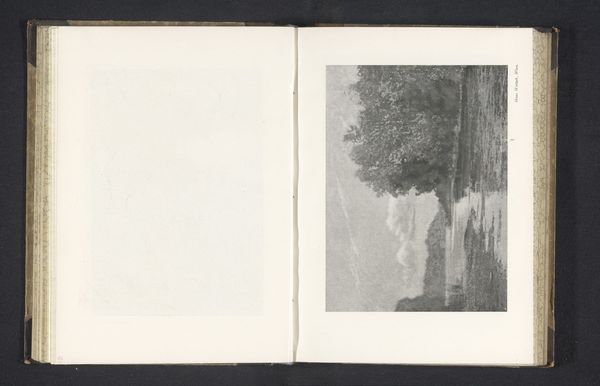
photography, gelatin-silver-print, albumen-print
#
landscape
#
photography
#
coloured pencil
#
mountain
#
gelatin-silver-print
#
albumen-print
Dimensions: height 206 mm, width 156 mm
Copyright: Rijks Museum: Open Domain
Curator: The striking image before us, titled "Gezicht op de Yosemitewaterval" – or "View of the Yosemite Waterfall," was captured by Carleton E. Watkins prior to 1868. What's your initial reaction? Editor: I feel this curious stillness... it’s as though time itself has paused, letting you simply *be* within this landscape. What's your take on it? Curator: It's tempting to get lost in the romanticism, but I think it is more important to understand Watkins’s position at the intersection of technological advancement and exploitation of natural resources. His albumen prints weren't just art objects; they were instrumental in the government's decision to designate Yosemite as a National Park. Editor: Wow, that's quite a heavy implication, if I think about it. And in terms of craft—this albumen print has such an ethereal quality; those muted tones amplify the otherworldly feel of the falls and the landscape itself. Did Watkins make his living mainly through prints? Curator: Precisely. Watkins's work was both art and industry, existing in a complex capitalist landscape where the market demanded reproducible images of "untouched" nature. This is a business! The photographs were marketed toward wealthy tourists and potential investors alike. It's also useful to analyze these things from a craft-related perspective. Editor: Interesting, because the way he frames the shot—the dark, looming trees almost gatekeeping this spectacular natural wonder... that tension of being ushered in while simultaneously held back—is masterfully achieved. Was that composition intended? Curator: Watkins knew the value of framing, indeed, but perhaps not in the sense of some intrinsic “artistic vision.” Rather, it's about orienting the gaze, positioning the viewer within a commodity relation to this land. Who can own this view? Who has the access? His technique with the wet plate collodion process allowed incredible detail. These images, made accessible, fueled Western expansion. Editor: Hmmm... So the question becomes: Can art *truly* ever escape its cultural and economic environment? It's tricky. It does make me think… thank you! Curator: My pleasure. Let us remember the legacy of an artist like Watkins includes a recognition of labor, access, and consumption inherent in visual practices.
Comments
No comments
Be the first to comment and join the conversation on the ultimate creative platform.
